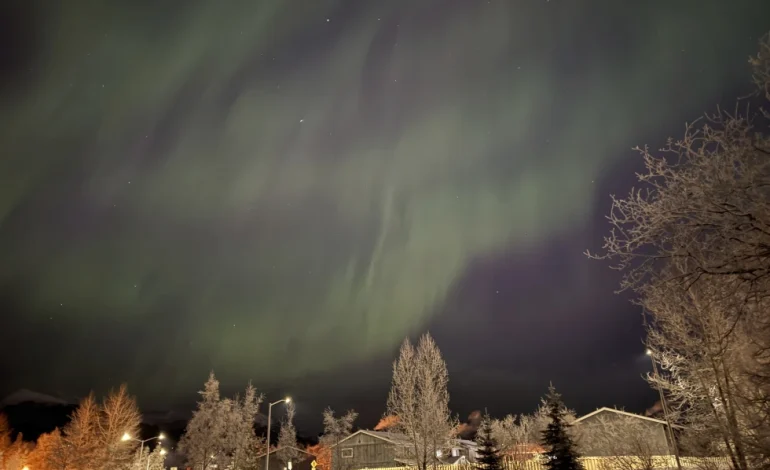A powerful solar storm headed towards Earth is anticipated to create vibrant aurora displays across a wider range of US states than usual tonight, potentially treating skygazers to a spectacular show of Northern Lights, The AP reports.
Earlier this week, the sun emitted significant bursts of energy known as coronal mass ejections, prompting space weather forecasters to issue a geomagnetic storm watch. This follows a period of heightened solar activity as the sun reaches the maximum phase of its 11-year activity cycle, resulting in more frequent and widespread aurora displays.
The NOAA’s Space Weather Prediction Center forecasts that the Northern Lights may be visible in Alaska, Washington, Oregon, Montana, North Dakota, South Dakota, Minnesota, Michigan, Wisconsin, Vermont, New Hampshire, and Maine. Additionally, parts of northern Idaho, Wyoming, Nebraska, Iowa, Illinois, New York, and Pennsylvania might also catch a glimpse of the aurora.
The intensity of the light show will depend on the interaction between Earth’s magnetic field and the solar bursts, according to Shawn Dahl at NOAA’s Space Weather Prediction Center.
While aurora displays, also known as the Northern and Southern Lights, are typically observed near the poles, recent activity has allowed them to be seen further south. In the past year, the strongest geomagnetic storm in two decades produced light displays across the Northern Hemisphere, and a powerful solar storm last fall dazzled observers far from the Arctic Circle, with lights appearing in locations like Germany, the United Kingdom, New England, and New York City.
The sun’s current active period is expected to continue at least through the end of the year.
Beyond the beautiful light displays, solar storms can also disrupt technology. When fast-moving particles and plasma from the sun interact with Earth’s magnetic field, they can temporarily disrupt power grids, interfere with air traffic control radio, and affect satellites in orbit. Historically, severe solar storms have had even greater impact; a storm in 1859 triggered auroras as far south as Hawaii and ignited telegraph lines, and a 1972 solar storm is suspected to have detonated magnetic U.S. sea mines off the coast of Vietnam.
Experts can’t predict solar storms months in advance but do provide alerts in the days leading up to their arrival.
For those hoping to witness the aurora, forecasts are available on NOAA’s Space Weather Prediction Center website and via aurora forecasting apps. NASA’s Kelly Korreck recommends seeking out quiet, dark locations away from city lights, such as local or national parks. Checking the weather forecast is crucial, as cloud cover can obscure the entire spectacle. Even a smartphone camera can sometimes detect faint traces of the aurora that are not visible to the naked eye.










The latest news in your social feeds
Subscribe to our social media platforms to stay tuned